Someone should have done that; back in the
1400-somethings when standing armies were first being organised, the Pope or
someone filling the place of a UN should have dictated that units would be
numbered in sequence from 1, within each country, with units suffering more
than, say, 65% casualties in a single action or campaign being retired as jinxed
or dishonoured or whatever. I mean - how can you have a 501st parachute unit
five minutes after the invention of the parachute, or a 633rd squadron less
than 40 years after the invention of the Airforce? Equally how can you have BB1
decades after the term battleship has been popularised!
I digress, and am in danger of getting up
on my high-horse and riding off on one! I think we've looked at these briefly
before, if we haven't they are in the queue (which I am totally losing track
of!) and will turn-up at some point, in a lesser form!
Waddington's board game pieces from the battle of The Little Big Horn game. I do have the complete game somewhere and
we will look at it as a briefer post when it turns up, but today we're looking
purely at the playing-piece figures.
Bluster and his flag, unlike the other
figures we're about to look at, there seems to be only two versions/mouldings
of this figure, and the fact that some of them are in a white plastic suggests
they may have had their own tool, and consequently, enough were manufactured
initially to carry through one of the subsequent publishing tranches. But the
blue ones are a tad poorer in sculpting and paint.
The flag also has at least two forms, and
the difference between them is more marked than the other variations we'll look
at! Late shots (below) reveal there probably are three different sculpts of
this figure too.
The Adjutant/ADC/2IC . . . 'other officer'
type! Here there seem to be three versions; the darker figure (second from the
left) being - probably - the Spanish original, a Hong-Kong'y, stab-and-hope
painted figure on the far right and two commoner intermediate figures - 1st and
third.
Below the main line-up are two comparisons between
the commoner one and the thin-based, in-house copy.
The troopers' consist of standing and
kneeling firers, with - again - three variations of sculpt for each, and a
second, rarer sculpting of the standing figure, leaning into the shot, which seems
to have had a shorter existence, being issued 1-to-2 of the standard
straight-legs in Spanish-figured sets? Elastolin-Hausser just had six kneeling
cowboys in blue styrene, very boring!
The upper line-up shows, from the left; two
commoner types in different plastic shades, a probably earlier Spanish one
(larger hat, deeper base) and finally; a thin-based copy. Below them to the
right are three kneeling firers, the larger one on the right being the -
probably - earlier one, the other two being similar to the eye, but which are
different.
With the Indians the main difference is
that earlier versions have nicer paint, in various schemes, while later sets
tend to contain simple painted-figures in the same scheme. On the left here is
a sample of mostly earlier figures with a variety of loin-cloth colours, some
enhanced with a second colour.
On the right are the three versions I've
found so far, with a smooth-based (three-part tool) on the left, a two-part
moulding with join-line in the middle and another thin-based, probably late
copy, to the right. The third version came in a sample of all plain-red
loin-cloths.
A similar situation occurs here with the
advancing-menacingly pose - I think they go top four (Spanish originals, chalky
plastic, three-part tool [no join-line], good painting), middle eleven
(two-part tool [join-line], smaller base, poorer painting) and the bottom one;
smaller, overall.
A closer look suggests the forth figure on
the top belongs with the lone warrior at the bottom?
There are only two obvious horse types,
three-part tool with a smooth base and two-part mould with a clear join-line
running across the bottom.
The various shades of sea/azure-blue
saddle-blankets only seem to occur with the better (three-part moulding)
horses, probably from the earlier sets, with the glossy later (?) sets only
having the red-fringed yellow blankets. Spanish-issued sets (see link below)
also have red blankets.
The shot bottom left compares the
(Spanish?) original on the left with the (right-hand) copy.
The riders are much harder to separate, but
there are clues; better paint, fuller sculpts and I have tried to line up the
bowmen by type, best at the top, while with the shooter, apart from three obviously
better sculpts at the top, the rest are a bit of a free-for-all?
Somewhere I have true Hong Kong copies of
the rifleman, unpainted on crappy horses, probably nothing to do with the game;
rather, some capsule or Christmas cracker knock-offs?
♦---------------------------------------♦
2nd photo-session
I have stuck with a plethora of 'probably's
above and question-marked the few attributions to Spanish originals because I
don't know the answers as to why there are at least three tranches of these, or
why there's an extra standing rifleman in the cavalry - sometimes (!), or why
the flags and horse only have two apparent types (both white plastic?) or even
why there's two Bluster's of the 7th, in different colours?
And while I always post this link as to being
the last word on all these sets originating in Spain, from Rojas y Malaret, and licensed to both Hausser (two games) and Waddington's
(Little Big Horn) along with the
French Capiepa, he
doesn't have much on these differences either, probably because he's dealing
with Spanish originals and the odd sample of British, German or French versions.
He does however highlight the differences,
crediting the third (?) set to Hong Kong, but I don't know where the
attribution comes from (they're not marked) and around a third of the Waddington's sets are Spanish-figure
equipped anyway. The Spanish figures have Jecsan-like
bases, but the horses are more Reamsa-like,
but I don't know who supplied Rojas''
- I think Lafredo have been fingered
as well? Elastolin used their own
figures (shipping the Macedonian elephant over from Spain - a bit like the Hannibal
originals!), and Waddington's had the
top-ups!
My guess - for what it's worth, is that the
set sold so extraordinarily well, so quickly, Waddington's were 'jumped' into finding tons more figures at short
notice to supply demand from big and/or powerful clients; mail-order firms or
department stores, probably in the
run-up to a Christmas?
Whether Waddington's
sourced the copies in the UK or HK is a moot point. And any source trying to
state Waddington's only used their
own/Hong Kong figures is bullshitting (you know who, over at Vichy!), 'early' Waddington's sets contain Spanish
figures; my own (when it turns up) has a set of mint, chalky, orangey-brown,
well painted Spanish figures.
Anyone who's been collecting in the UK for
any length of time, who's rocked-up at enough shows or who knows the odd dealer
will know this set is not rare over here, with some dealers having a 'stock'
stack of them, and most shows turning-up at least one, with loose figures
seemingly in most rummage trays! And most donators to the collection/Blog have
heaved a few this way over the years.
And the obvious thing is; the British boxes
are all the same, whatever figures are in them, so while it would seem to go: 1
Spanish - 2 Spanish-like - 3 Honk Kong'y, and common-sense dictates such, there
is no empirical evidence for either the order of issue, or the origin, Waddington's may even have had the
Spanish tool - for a while?
The conclusion being; it was a very popular
set - the year I was born!

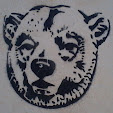



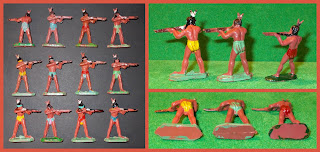
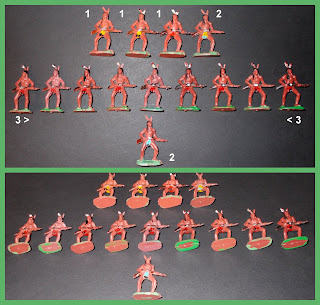




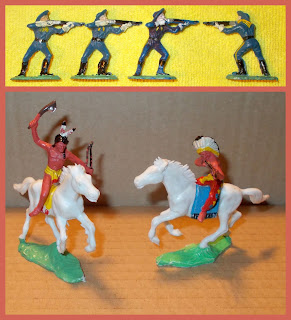
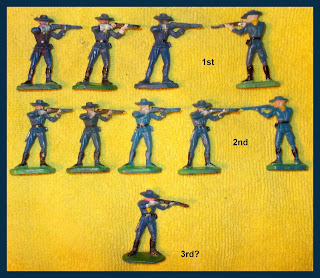


No comments:
Post a Comment